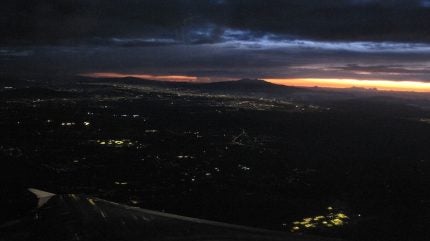
Ecuador has been hit hard by an extraordinarily long drought, believed to be exacerbated by global warming, that has engulfed much of South America, drying rivers and reservoirs and putting the country’s power grid, heavily reliant on hydropower, on the brink of collapse. Since September, daily energy cuts have lasted as long as 14 hours.
Since 23 September, government-controlled blackouts have occurred almost daily in a country of 18 million. Some outages can last up to 14 hours. The cuts aim to prevent the collapse of the electrical grid, as the months-long drought dries up the rivers that power hydroelectric dams, Ecuador’s primary source of electricity.
Initially introduced as a stopgap measure, the power cuts had been extended into a third consecutive month, but in the face of public outcry and protests on the streets, president Daniel Noboa had announced that the blackouts for most Ecuadorians would end, starting on 20 December. Power cuts for industry, however, will continue until at least the end of the year.
“We were already impacted prior to the blackouts, but what the blackouts did was deteriorate our living conditions even more,” said Marcela Arellano, president of the Ecuadorian Confederation of Free Trade Union Organisations (CEOSL). The manufacturing industry and small businesses are the sectors worst hit by the outages, says Arellano – many small businesses and factories are unable to afford generators, which are increasingly popular among larger companies as well as some restaurants and cafes. But without power, businesses are forced to shutter early, and factories have decreased production.
In November, Quito’s Chamber of Commerce estimated that the manufacturing industry lost $4bn and the commerce sector $3.5bn during the first two months of power cuts.






